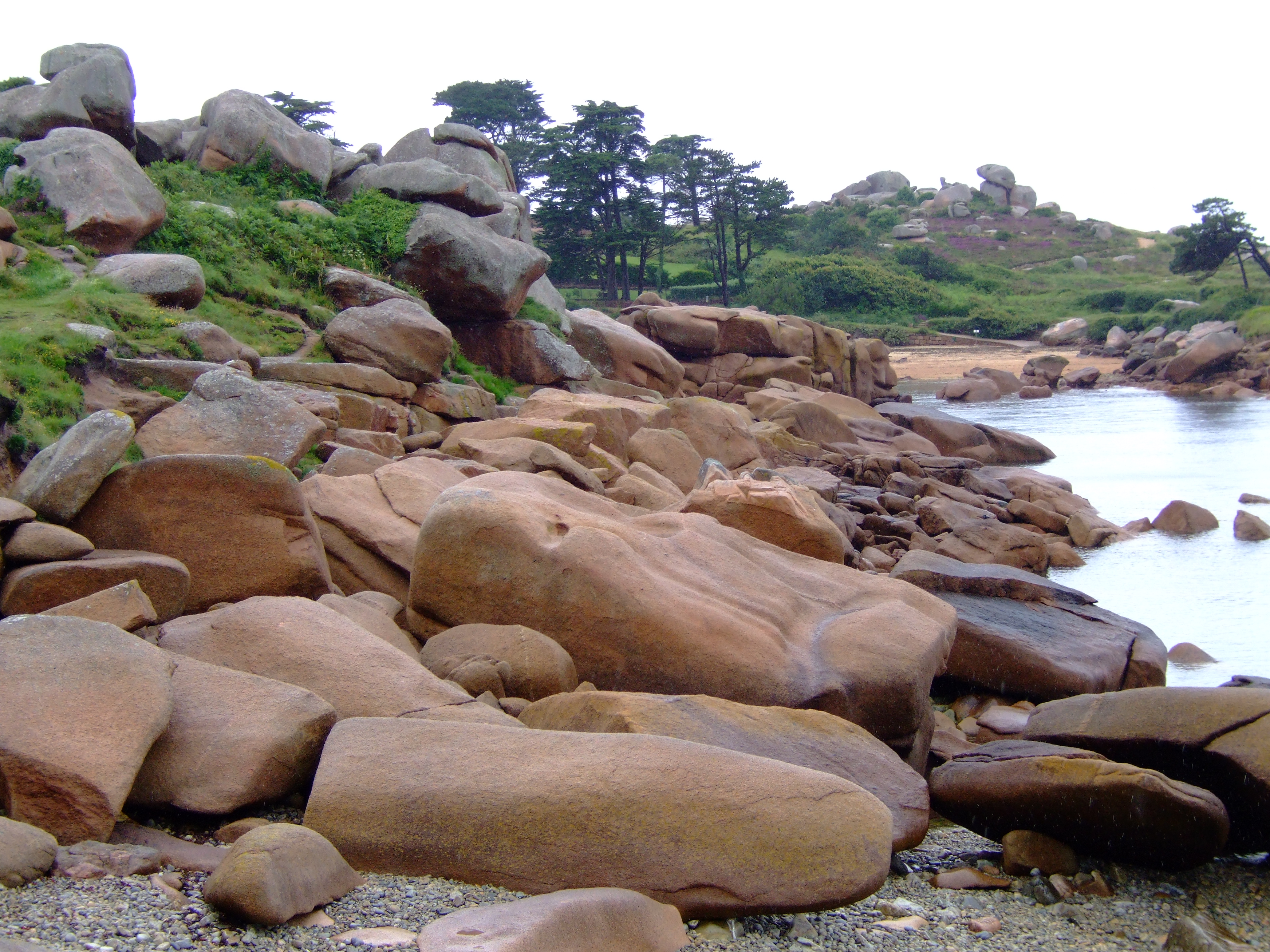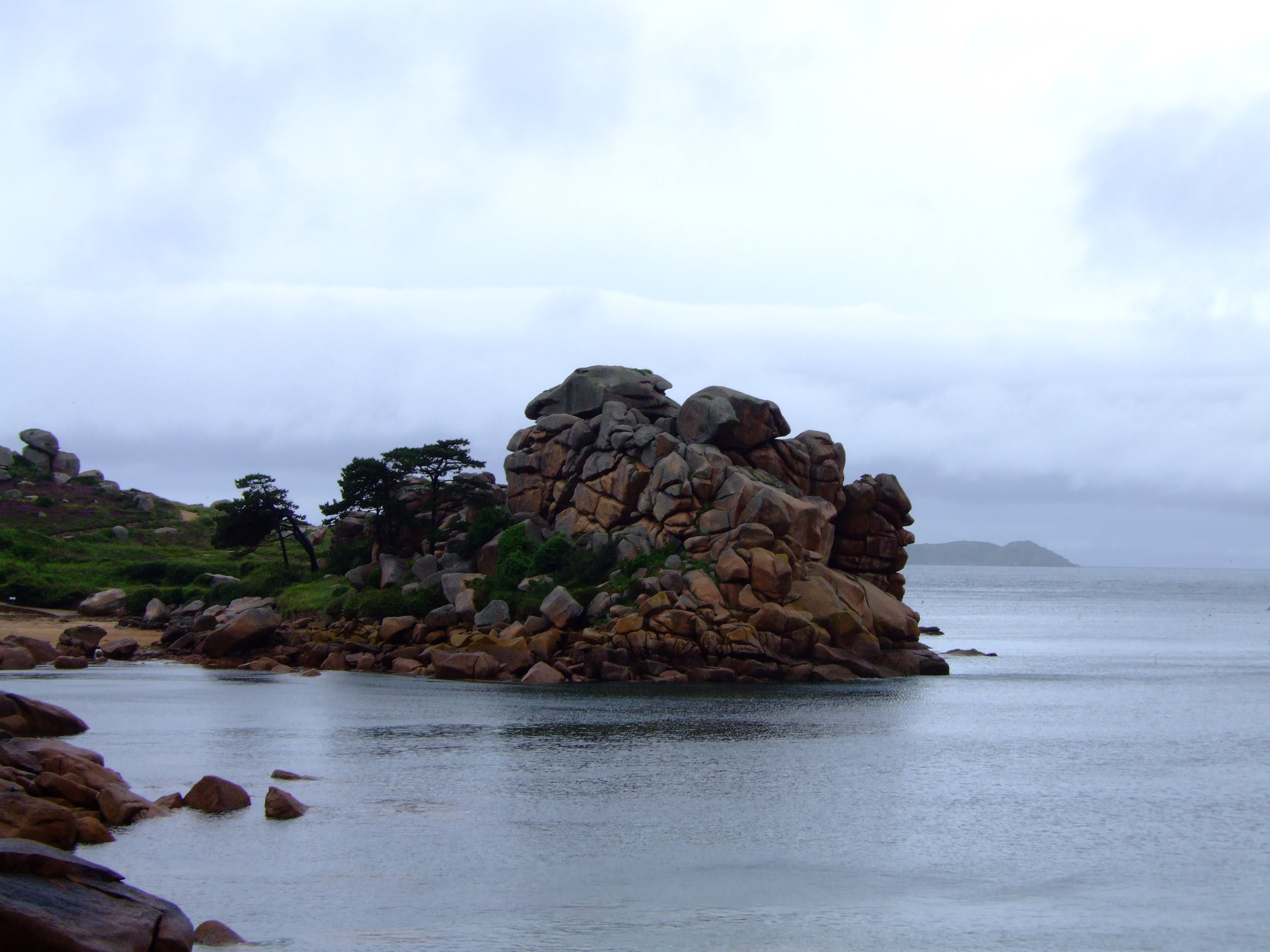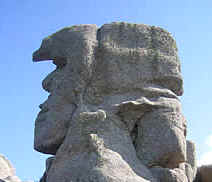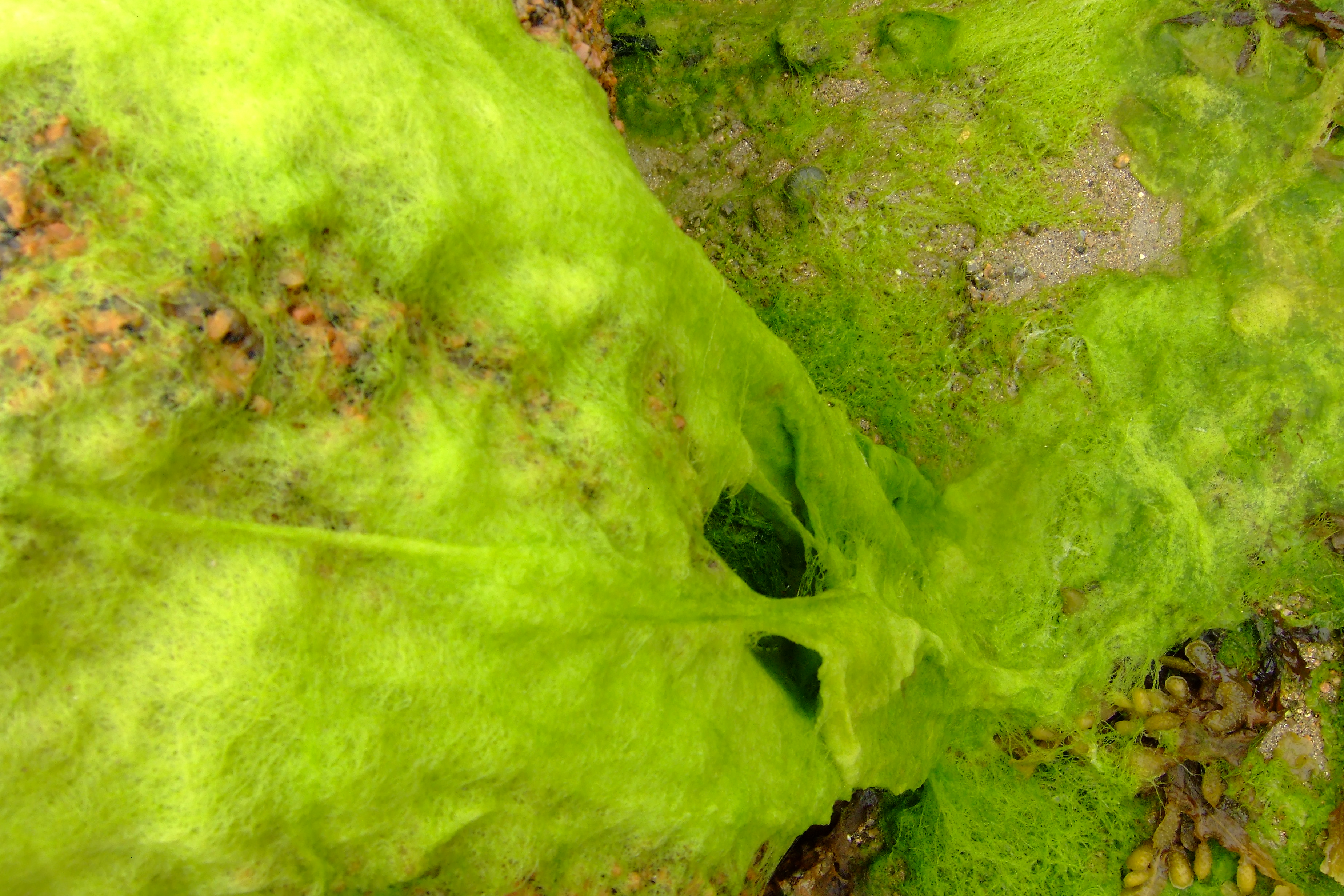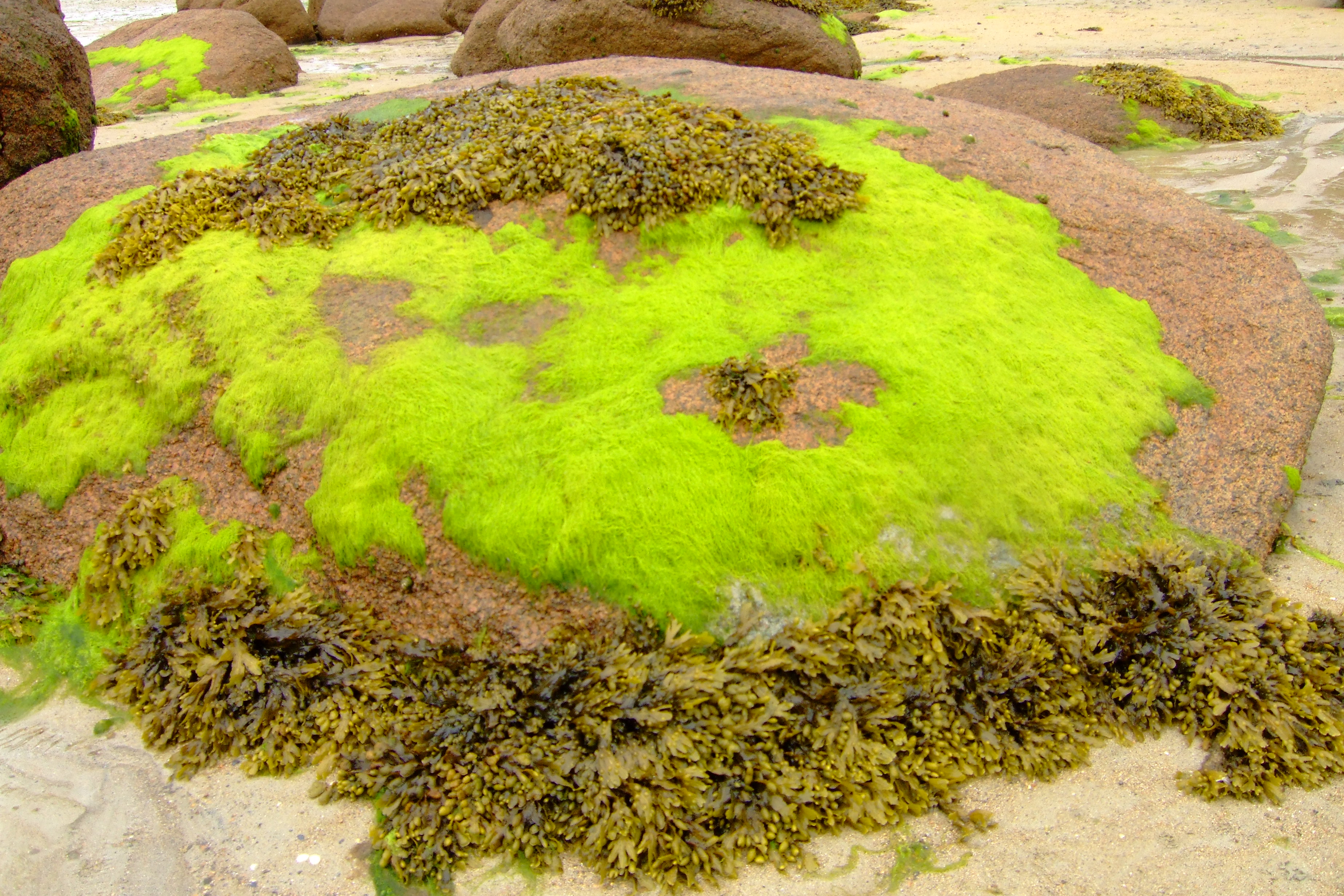|
|
|||||
|
Tie tirisseo
|
|||||
| There exist
landscapes that are so enchanting that even the worse weather conditions
cannot dampen my enthousiasme. The coastguards' path, created at the end
of the 18th century, along the coast of
Brittany offers many beautiful sceneries; one of these is the Rose
Granite Coast. The heaps of these rocks, the result of millions of years
of erosion are impressive by their size and their rosy colour.
Men tyaliéva A playground
|
|
Il existe des
paysages tellement enchanteurs que même les pires conditions
météorologiques ne réussissent pas à tempérer mon enthousiasme. Le
Sentier des douaniers, créé à la fin du 18ème siècle pour lutter
contre la contrebande, permet de longer les côtes de la Bretagne et
offre à bien des endroits un décor magnifique, comme, entre autres, la Côte de Granit rose. Ces rochers, le résultat de
millions d'années d'érosion, sont impressionnants par leur taille et
la couleur rose. Une place de jeu
|
|||
|
Coming from Perros-Guirec, the first imposing rock formation is called "devil's castle". It looks indeed like a fortress surrounded by the sea and under the dark, heavy clouds a bit gloomy. Rauco arcoa - The devil's castle -
|
|
En provenance de
Perros-Guirec, la première formation de roches imposante que l'on
rencontre est le "château du diable". Cet amas carré
rappelle effectivement une forteresse les pieds dans l'eau et sous les
lourds nuages menaçants, ce château a l'air un brin ténébreux.
Château du diable -
|
|||
|
From this point on follow rocks on which Manwe and Ulmo have given free expression to their imagination: strange animals, a bottle, the face of a gloomy old man, a scull and many more. Norsie onnar Giant creatures
|
|
A partir de là, on se dit que Manwe et Ulmo se sont donnés à coeur joie pour façonner ces sculptures étranges: des animaux, une bouteille, le visage sombre d'un vieil homme, une tête de mort et bien d'autres encore.
Créatures géantes
|
|||
|
Atar *Morindo - Father Darkmood - *The name of this rock is "Père Trebeurden". The etymologie is probably: Tre = village and Perden = the name of a local Saint. His expression being rather gloomy, I call him "Darkmood" = more + indo.
|
|
Père
"Maussade" -
*En fait, le nom de cette roche est "Père Trebeurden". L'étymologie est probablement: Tre = village et Perden = le nom d'un Saint inconnu. L'expression de ce visage étant plutôt sombre, je l'ai appelé en Quenya "Humeur noire"
|
|||
|
In the charming bay of Ploumanac'h sheltered by rose granite rocks stands the chapel of Saint-Guirec and on the beach the little oratory. Luime wintuva High-tide will scater * Saint Guirec's name has apparently several spellings in Breton: Kirec, Cirec, Hirec. Hence my choice of Hirec with final -c- becoming -t- (see filit, filic-)
|
|
Dans la charmante baie de Ploumanac'h, protégée par des rochers roses s'élève la chapelle de Saint-Guirec et sur la plage son petit oratoire.
La marée haute répandra
|
|||
|
In the morning, when the sea withdraws, the beach becomes a vast garden. Different types of seaweed spread out over the rocks, some are of the most spectacular green. Arse númenna - He is out to the West -
|
|
Le matin, lorsque la mer se retire, la plage devient un vaste jardin. Toutes sortes d'algues s'étalent sur les rochers, certaines illuminent le sable d'un vert spectaculaire.
Quand il part à l'ouest
|
|||
We are already walking for three days in continuous rain and wind. The sun seems only wanting to tease us, showing up just long enough to stir hope for a weather change. Menelye neni Heavenly waters
|
Nous marchons trois jours déjà sous une pluie incessante. Le soleil s'amuse à nous taquiner. Il montre le bout de ses rayons juste assez longtemps pour éveiller en nous l'espoir d'un temps plus clément.
Les eaux célestes
|
||||
At last, a whole afternoon and an evening without a single drop. This respite invites to long strolls on the beach, watching the gulls and waiting for the waves to break on the rocks. Ninqui rámalin For white wings
|
|
Enfin, un répit, tout un après-midi et un soir sans la moindre goutte. C'est une invitation pour se promener longuement sur la plage, observer les mouettes et les goélands et voir les vagues se briser sur les rochers.
Pour les ailes blanches
|
|||
I
sinyesúre Evening wind *Kite is from the OE cyta - a kind of hawk. No such word being available in Quenya, my choice of "play-dragon" is from the German "Drachen" : stem for play _TYAL_ + lóce = dragon
|
|
Vent du soir *Le mot anglais "kite" vient du vieil anglais "cyta" - une sorte de faucon. Le Quenya n'ayant pas de mot pour "faucon", mon choix s'est porté sur l'allemand "Drachen" pour un mot composé de la racine pour jouer _TYAL_ + lóce = dragon |
|||
|
fter five days, we arrive in Lannion or Lannuon as it is called in Breton. The historic center has many interesting, ancient houses from the 16th - 17th century. The templer church of Brélévenez dominates the city. Despite the rain, we walk up the hill to the church. We arrive at the moment when a long funeral procession leaves the church. Nyelleo lámar The sounds of the bell *séré + men for place of rest = cemetery from Gk koimeterion - sleeping place, PIE base *kei- "to lie, rest" |
|
Après cinq jours, nous arrivons à Lannion, ou Lannuon en breton. Le centre historique comprend de nombreuses maisons anciennes du 16ème - 17ème siècle. L'église templière de Brélévenez domine la cité du haut d'une colline. On peut y accéder par un escalier qui relie plusieurs terrasses qui correspondent aux anciens remparts. Malgré la pluie, nous montons vers l'église et nous y arrivons au moment oú un convoi funèbre quitte l'église.
Les sons de la cloche *_sére_ + _men_ pour place de repos ou place de la paix = cimetière du grec koimeterion - place du repos, racine PIE *kei- "être couché, reposer"
|
|||
Paco
rénasse In the court's corner
|
Dans l'angle de
la cour |
||||
